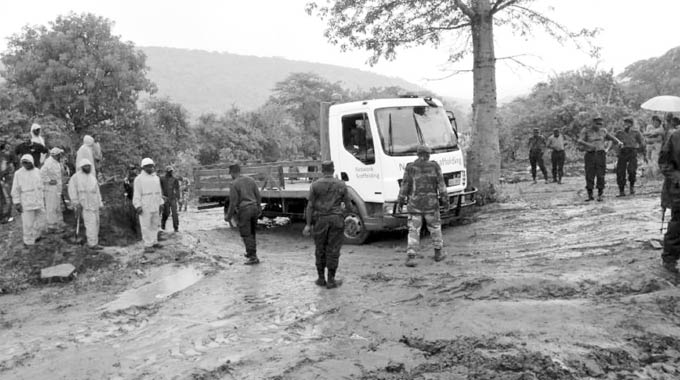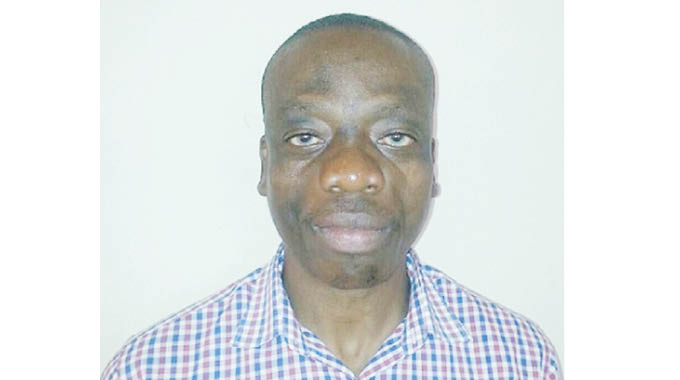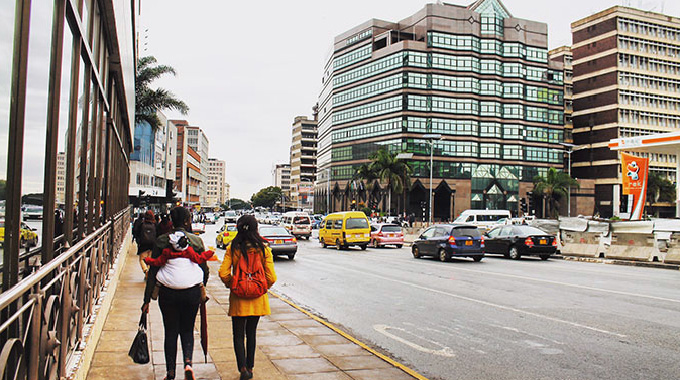Climate change — Can nature’s balance be restored?

Cuthbert Mavheko
People around the world observed International Day of Peace on September 21, a day which is observed annually to promote and enhance peace among nations and peoples.
International Day of Peace was established by the United Nations (UN) in 1981. In 2002, the UN declared it a permanent holiday. Through education and public awareness campaigns, the UN endeavours to strengthen the ideals of peace and brotherhood among all the inhabitants of the world.
Peace is recognised as the innate state of being and a dynamic developmental process, wherein constructive growth can occur so that the children of this and future generations gain hope for a better world to inherit.
This year is particularly important as it is the 20th anniversary of the UN Resolution on the Programme of Action on a Culture of Peace, whose overall goal is to build a culture of peace among people around the world.
It is worth noting that in 1945, the UN was formed to champion the cause of peace in the world. This was after the end of the most destructive war in the history of mankind (World War 2), which claimed an estimated 50 million people between 1939 and 1945.
This year’s theme “Climate Action for Peace” is important as it draws the world’s attention to the urgent need to combat climate change as a way of protecting the environment and promoting peace throughout the world.
It just cannot be over-emphasised that there is currently an alarming increase in the number of natural disasters the world over and this poses a grave threat to the environment.
Cyclones, typhoons and hurricanes are fiercely devastating many a country, causing death and destruction on a massive scale. Cyclone Idai, for instance, devastated parts of Mozambique, Malawi and Zimbabwe, leaving multitudes of people dead and causing massive destruction to infrastructure. Sad to say, this left hordes of people homeless.
In some parts of the world, earthquakes and volcanoes are killing thousands of people every year. The Mexico City earthquake of 1985, for instance, killed thousands of people and a volcano erupted in Colombia, obliterating an entire city.
To rub salt to injury, wars are raging in several parts of the world and many people often wonder if the prophesised ‘time of the end’ told by Jesus of Nazareth is now at hand.
“And you will hear of wars and rumours of wars. See that you are not troubled; for all these things must come to pass, but the end is not yet. For nation will rise against nation, and kingdom against kingdom. And there will be famines, pestilences and earthquakes in different places,” (Matthew 24:6-7).
When one searches for words to describe our unusual weather patterns and the increasing devastation of nature – words such as topsy-turvey seem very appropriate.
We build dams and dikes to attempt flood control. We seed clouds with very little success in a futile attempt to bring rain to drought-plagued areas. Because we cannot control these factors, we employ other measures to produce food from the land. If it does not rain, we put the land under irrigation. Then we use fertilisers to increase our produce.
That process continues ad infinitum and the result is depleted soil, increased salinisation and the lowering of water tables.
According to some surveys, today there are half a million man-made chemical compounds in use, and as many as 1 000 new chemical formulas come on the market every year.
Approximately 50 000 of the seven million known chemicals are commercially produced and about 35 000 of these have been classified by some government agencies as either definitely or potentially hazardous to human health.These chemicals trickle into once pristine rivers or pollute deep water wells.
In our overly-populated cities, we discharge polluting smoke from industries and automobiles into the atmosphere daily.
Alas, man-made problems have now become great or greater than natural disasters. To chemical fertilisers we have added chemical pesticides and herbicides and we watch diseases and pests develop immunities to the chemicals manufactured to eliminate them.
With all these chemicals on and in our food, we wonder if it is even safe to eat the food.
Desertification, a destructive process, is turning most farmlands the world over into deserts. About two thirds of the nations in the world and one in seven people are directly affected by the scourge of desertification.
While measurements of the extent of desertification are difficult to make, estimates made by the UN in 1984 concluded that about 35 percent of the earth’s cultivatable land is threatened by desertification. The report also shows that 10 percent of the world’s population is already affected by the devastating process.
According to Dr Mostafa Tolba, a former executive director of the United Nations Environmental Program, the major cause of desertification is not drought as some are wont to believe.
“Desertification is caused by over-exploitation of lands through over-cultivation, overgrazing, poor irrigation practices and deforestation,” he said.
While science is making some progress in coming up with methods to reduce pollution, most areas of the earth have seen no relenting of pollution, no progress in lessening degradation of environments. In fact, for most parts of the earth, old pollution problems continue to deteriorate under the onslaught of concentrations of humans or animals; from rapid and thoughtless applications to agriculture of dangerous chemicals and from modern industrial technology.
Pollution in one country is internationalised as it is carried to other nations by air and water currents. Most big cities in developed and developing nations alike are frequently smothered in noxious smog. Tons of toxic chemicals threaten humanity from thousands of improperly used dumps and landfills around the world.
Daily, chemicals are trickling into our water supplies and oceans are evaporating into the air and destroying the ultraviolet-screening ozone layer. There appears to be no universal political will; not enough money and no quick or long-term technological bail-out on the horizon to reverse worldwide polluted air, polluted water and polluted soils.
λ Cuthbert Mavheko is a freelance journalist living in Bulawayo. He can be contacted via mobile 0773963448 or e-mail address [email protected]










Comments